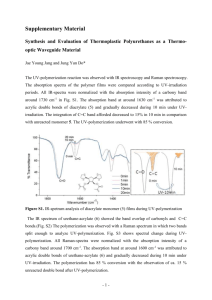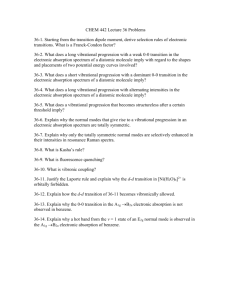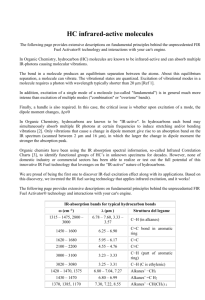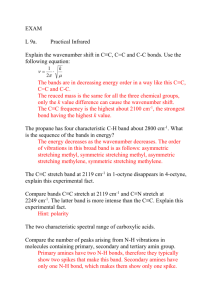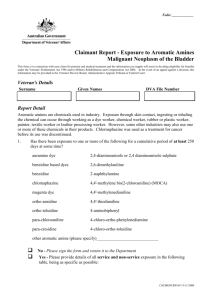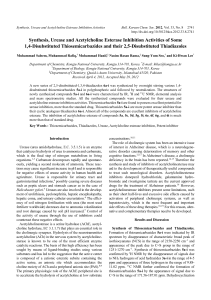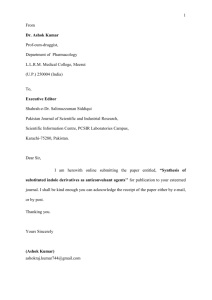Infrared Unknown Identities
advertisement
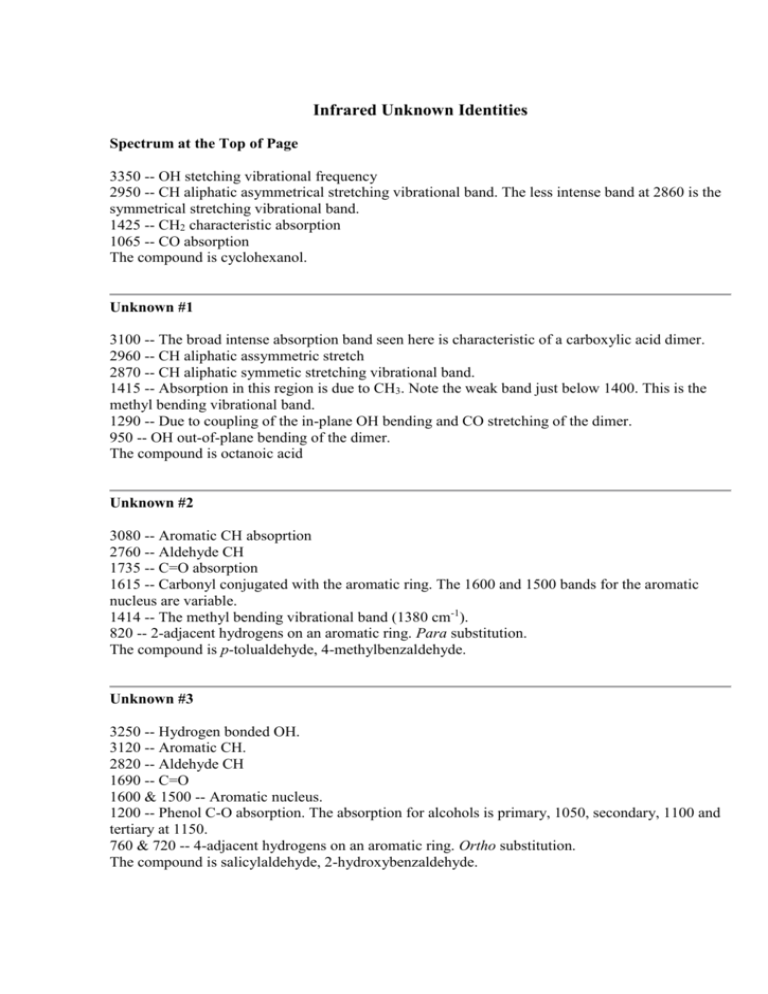
Infrared Unknown Identities Spectrum at the Top of Page 3350 -- OH stetching vibrational frequency 2950 -- CH aliphatic asymmetrical stretching vibrational band. The less intense band at 2860 is the symmetrical stretching vibrational band. 1425 -- CH2 characteristic absorption 1065 -- CO absorption The compound is cyclohexanol. Unknown #1 3100 -- The broad intense absorption band seen here is characteristic of a carboxylic acid dimer. 2960 -- CH aliphatic assymmetric stretch 2870 -- CH aliphatic symmetic stretching vibrational band. 1415 -- Absorption in this region is due to CH3. Note the weak band just below 1400. This is the methyl bending vibrational band. 1290 -- Due to coupling of the in-plane OH bending and CO stretching of the dimer. 950 -- OH out-of-plane bending of the dimer. The compound is octanoic acid Unknown #2 3080 -- Aromatic CH absoprtion 2760 -- Aldehyde CH 1735 -- C=O absorption 1615 -- Carbonyl conjugated with the aromatic ring. The 1600 and 1500 bands for the aromatic nucleus are variable. 1414 -- The methyl bending vibrational band (1380 cm-1). 820 -- 2-adjacent hydrogens on an aromatic ring. Para substitution. The compound is p-tolualdehyde, 4-methylbenzaldehyde. Unknown #3 3250 -- Hydrogen bonded OH. 3120 -- Aromatic CH. 2820 -- Aldehyde CH 1690 -- C=O 1600 & 1500 -- Aromatic nucleus. 1200 -- Phenol C-O absorption. The absorption for alcohols is primary, 1050, secondary, 1100 and tertiary at 1150. 760 & 720 -- 4-adjacent hydrogens on an aromatic ring. Ortho substitution. The compound is salicylaldehyde, 2-hydroxybenzaldehyde. Unknown #4 3060 -- Aromatic CH 2960 & 2890 -- Asymmetric and symmetric stretching of aliphatic CH 1615 & 1510 -- Aromatic nucleus 1470 -- Aliphatic CH2 sissor for the methylene group. 745 &705 -- Pattern for five adjacent hydrogens on an aromatic ring. (Monosubstitution) Note the overtones between 1660 & 2000. The compound is diphenyl methane. Unknown #5 2995 --Aliphatic CH symmetric and assymetric stretching vibration absorption. 1765 & 1740 -- C=0 Note the two minima of this band. Two carbonyls. 1380 -- CH3 bending vibrational band. The bands abrove 1400 are due also due to CH for methyl and methylene. 1280 -- Asymmetric stretching for the C-O-C of the ester.Other bands in this region may be related due to the complex nature of the molecule. 1045 -- Symmetric strectch for the C-O-C of the ester. The compound is diethyl malonate. Unknown #6 2960 & 2980 -- Asymmetric and symmetrical CH absorption 1480 -- Aliphatic CH2 sissor for the methylene group. 1395 -- These two peaks are characteristic of CH3. The unknown is squalane, 2,6,10,15,19,23-hexamethyltetracosane, C30H62
